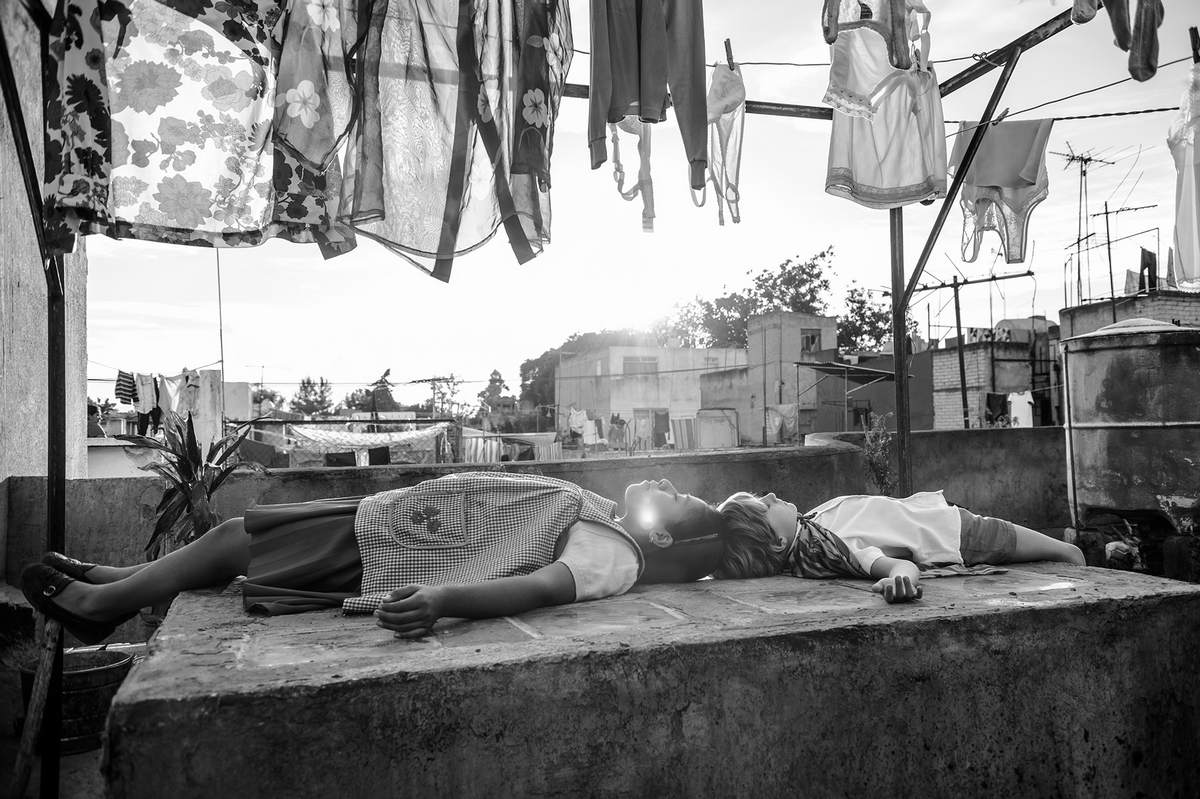Review: The Affectionate Love Letter Found In Alfonso Cuarón’s ‘Roma’
This review was originally published for UW Film Club and has since been republished here with the author’s permission.
Roma: Alfonso Cuarón’s newest feature and Netflix’s latest pickup in pursuit of Oscar glory. In years past, Netflix didn’t play nice with theaters, making them the self-made pariah of award shows, festivals, and the like. But with Roma, they seem to be keenly aware of what they have on their hands, choosing to change their strategy by giving it a wider theatrical release before it hits their platform. These actions are completely justified as this film is their best chance at an Oscar yet, and not just any Oscar, but Best Picture. Roma is a true piece of cinema, a sincere, affectionate love letter to the women that helped raise Cuarón in an elegant, realist package.
Set in Mexico during the early 1970s, the film follows Cleo (Yalitza Aparicio), a caretaker who works for Sofia (Marina de Tavira), the mother of four children and wife to the always absent Antonio (Fernando Grediaga). Over the course of one year, Roma shows the events in their lives and how they overcome the challenges they are confronted with.
Light spoilers in the following paragraph.
At the heart of Roma is its affection for mother figures. The film underscores the unique position of maternal roles in society: to be the source of support for all while also being self sufficient. Both Sofia and Cleo are women who must be depended upon by others, but cannot depend on anyone themselves. The former must care for her children but cannot receive support from her unfaithful husband. The later must provide service to Sofia and her children, while her boyfriend abandons her in her time of need. Cuarón has cited the film as his love letter to Libo, the real-life woman who took care of him when he was growing up, and it shows. Cuarón frames both Sofia and especially Cleo affectionately as he retroactively thanks those that helped him and appreciates what the maternal figures in his life did for him.
A visual point of praise for the film is its cinematography. Any trailer or still you’ve seen of the film will show just how elegant and well-crafted the black-and-white photography is. In general, black and white can be misapplied as solely a stylistic choice rather than a contributing element of the film. (Ask yourself, “Why did this modern film need to be black and white?” and you’ll often find yourself coming up short on answers.) But Cuarón makes it an important element of the film. The film is shot on digital, so it lacks the texture you get from film, but like an old photograph, the use of black and white makes appeals to the distant past, contributing to the memorial aspects of the film.
Being that this is a Netflix release, most will see this on their computer or television. That’s not ideal (as all films are made better in a theater except for something like Unfriended), but I wouldn’t consider it a dealbreaker. Most won’t even have a theater near them playing it, but the big screen does let the wide angle cinematography really flex and that combined with the punchy black and white photography makes for striking imagery that is sorely missing from other run-of-the-mill films on your computer scene. Cuarón is a bonafide auteur who knows what he is doing (he is credited as both director and cinematographer, after all), so while it’s small in scope, the film truly feels cinematic.
Additionally, Cuarón has seemingly mastered his trademark panning shot at this point. The camera moves elegantly over the scene, making use of extended long takes and excellent staging to create an all-encompassing view of the setting. The long takes and slow pans evoke an Italian neorealist aesthetic that leaves nothing out in order to present a true-to-life depiction of the past. As such, the film can feel aimless at times. The longevity and all-inclusive nature can make you feel as if the film is holding for no reason, and to some extent that is true.
The film is like a window into the life of Cleo. We open on an uneventful note and leave on one too, but that seems to be the point. Cuarón wants you to observe everything in the time span you are allowed and to draw conclusions about the people you see. It is a film with no central plot driving it, just events as they occur, in order, in the window you are granted. The camera’s eye plays into the aforementioned realist effect. Nothing is everything, and while the nothingness can feel disengaging at times, it’s simply the style of the film. Cuarón is just turning on the camera, recording what’s in front of it, and letting you take it all in.



